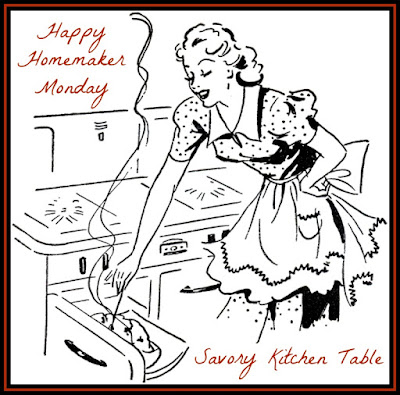WHEW! This is going to be both a short and long week. Short in the time to get things done, long in anticipation of the BIG day. My brother is getting married next weekend so there is a lot to do. It’s a destination wedding so we have packing to do, decorations, kenneling dogs and picking up out of town relatives to start with.
Be sure to link up with Sandra at Diary of a Stay at Home Mom for Happy homemaker Monday and with Laura at I’m an Organizing Junkie for Menu Plan Monday.
WEATHER OUTSIDE
It has been absolutely beautiful here until the temperature shot up 18 degrees and got a bit muggy again this past weekend making it exceptionally warm! It is supposed to be nicer as the week gets older and we’re spending the weekend at the coast for the weekend which will be ABSOLUTELY beautiful!
TO DO FOR THE WEEK
- Pack for the wedding
- Make a folding board for the backseat – our normal set up won’t work since we have to pick up my future sister-in-law’s sister from the airport after we drop the dogs off at the kennel.
- Physical Therapy appointment*
- Eye Surgery F/U appointment*
*I’ll sure be happy when hubby can drive again.
CURRENTLY READING
I’ve been slacking a little on reading lately. I’m hoping to get some done this weekend while we are away.
TELEVISION / DVR
- Astronaut Wives Club
- Complications
- The Strain
- Proof
- Dark Matter
- Devious Maids
- The Last Ship
- Falling Skies
- Under the Dome
- Rookie Blue
|
BREAKFAST
|
DINNER
|
DESSERT
|
|
|
MONDAY
|
Cereal & Fruit
|
HAM & CHEESE FRENCH TOAST
|
|
|
TUESDAY
|
Bagel & cream cheese
|
SWEET & STICKY PORK CHOPS & DIRTY RICE
|
|
|
WEDNESDAY
|
Blueberries & Granola
|
||
|
THURSDAY
|
Scrambled Eggs with cheese & Toast
|
BEEF & POTATO HAND PIES
|
|
|
FRIDAY
|
Yogurt with Blueberries & Granola
|
REHEARSAL DINNER
|
|
|
SATURDAY
|
Biscuits & Gravy
|
WEDDING
|
|
|
SUNDAY
|
Ham & Cheese Omelets
|
ALOHA RIBS & HAWAIIAN POTATO SALAD
|
SUCCESSFUL RECIPES FROM LAST WEEK
- Tuna Casserole – Grandma Style
- Caramel Pecan Dump Cake
- Caramel Shortbread Bars
- French Onion Bacon Soup
RECIPE FINDS TO TRY LATER
- Roasted Red Pepper Hummus
- Ham & Pea Pasta Salad
- Toretellini Salad
- Chipotle Meatloaf
- Almond Fruit Stollen
- Morning Sweet Buns
- Backyard Jerk Chicken
- Peach Dump Cake
THINGS THAT MAKE ME HAPPY
- Sunny beach days
- Watching kids play with non-technology (riding bikes, flying kites…)
INSPIRATION
































































